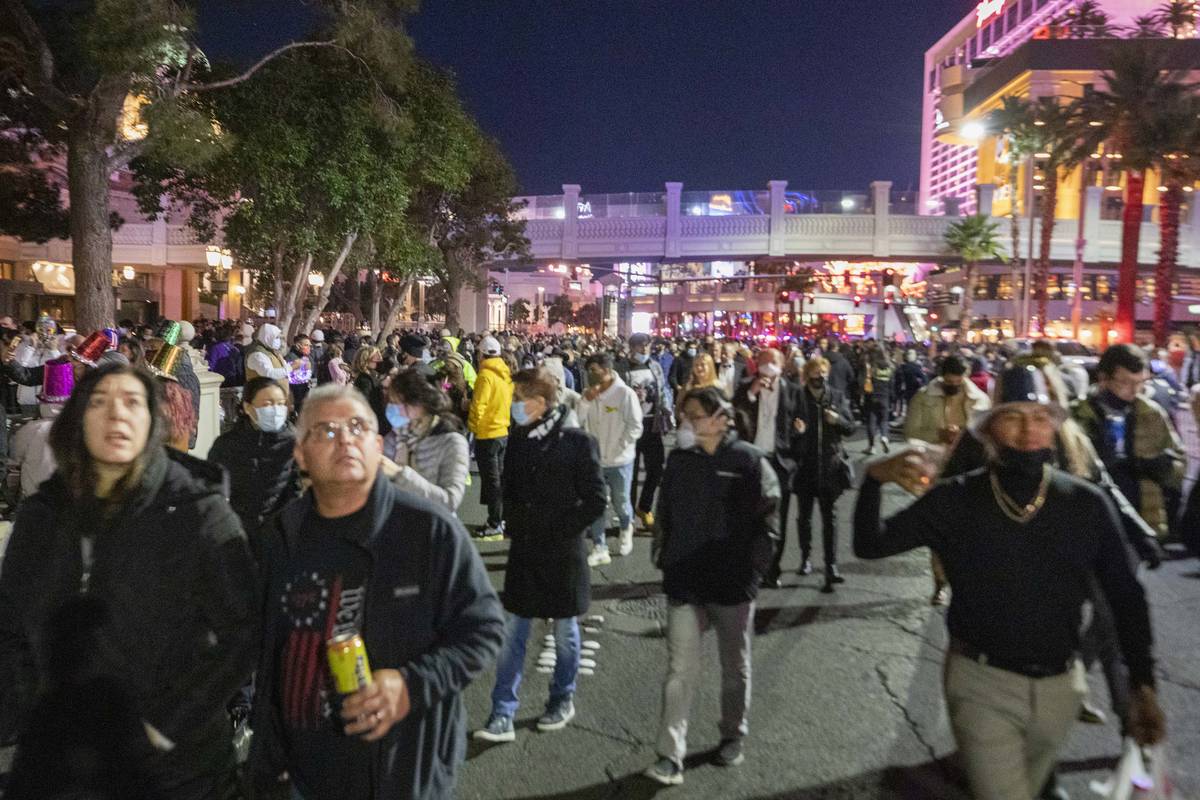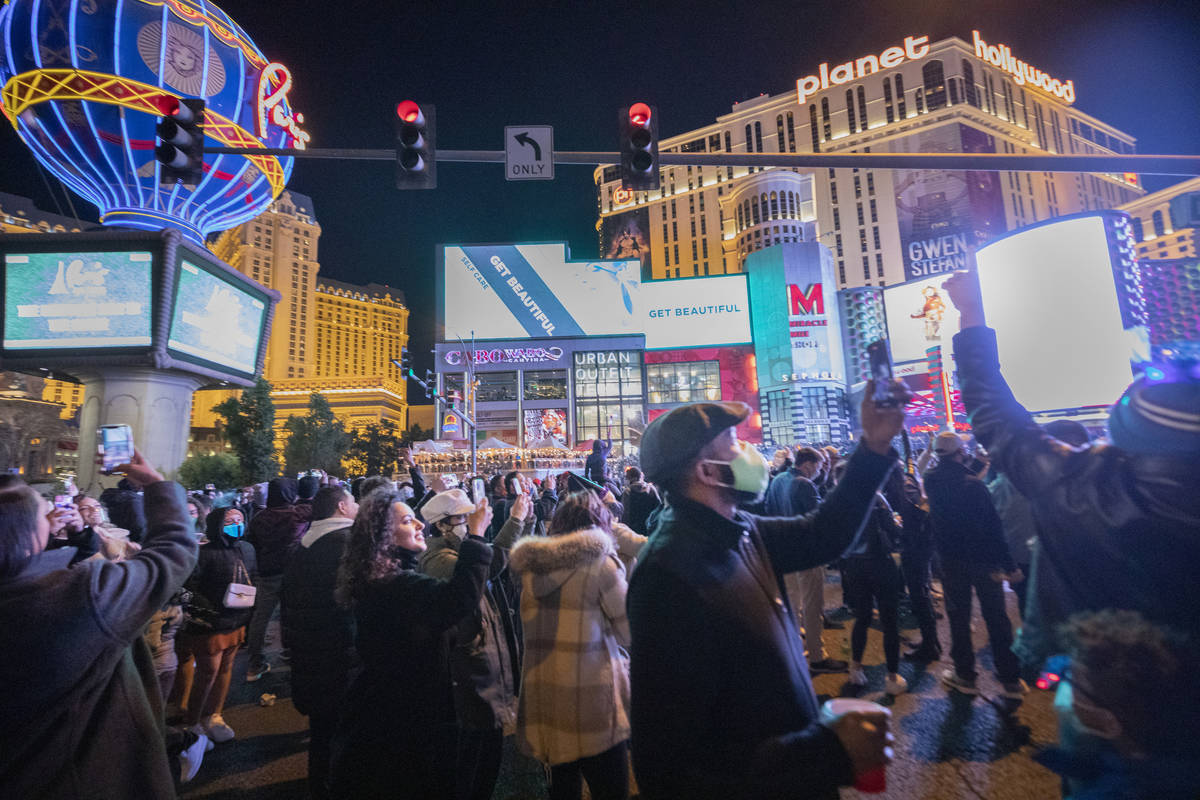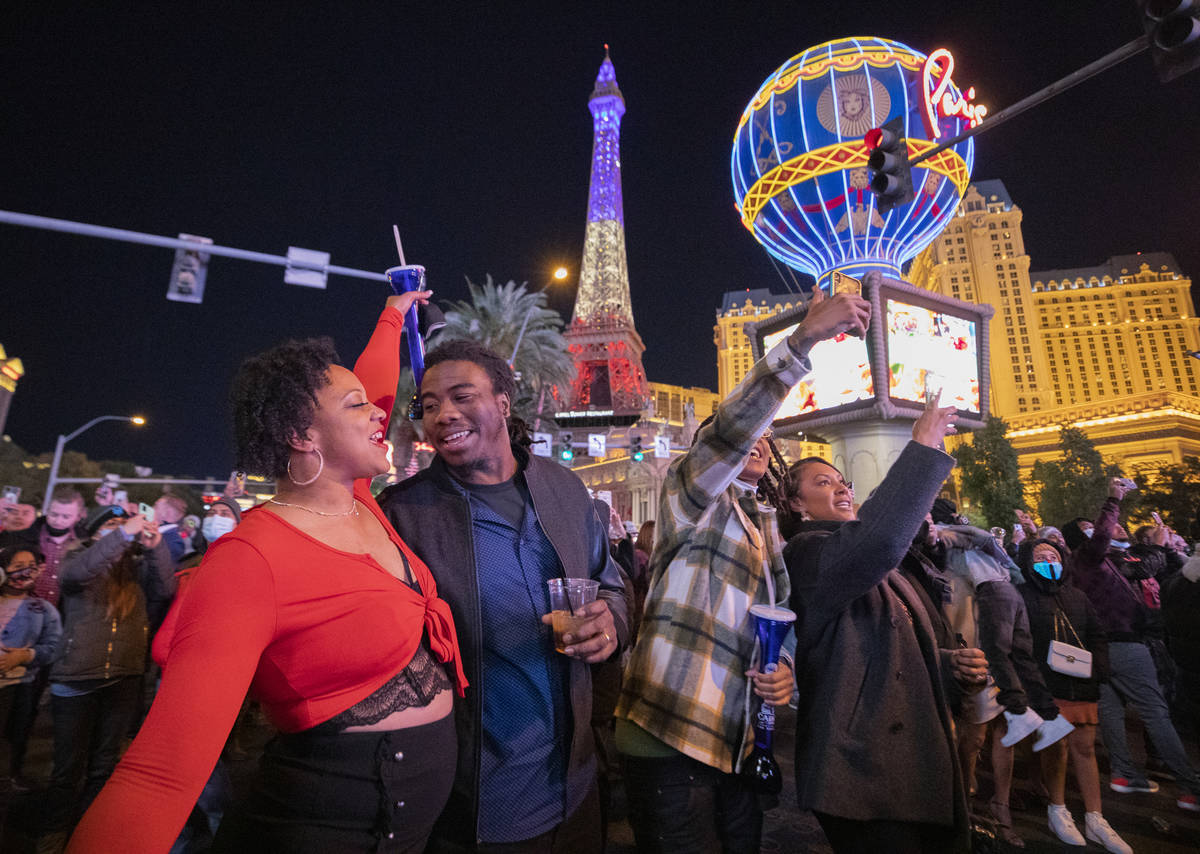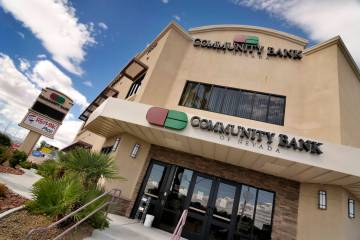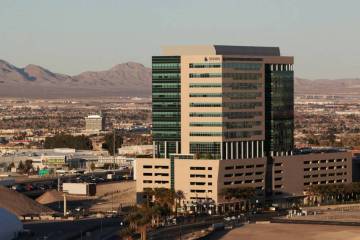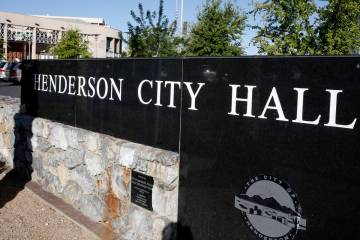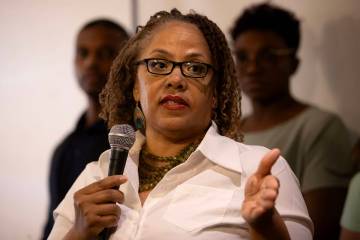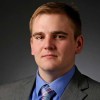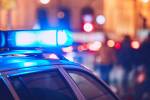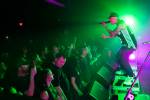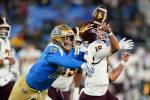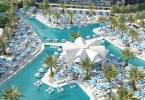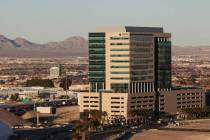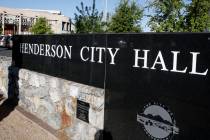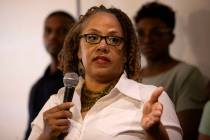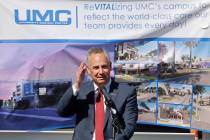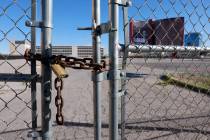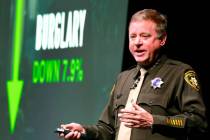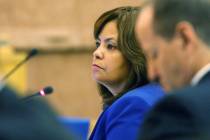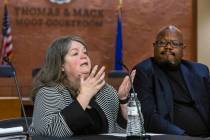‘A collective failure’: Health experts fear COVID superspread on NYE
Working inside a Las Vegas Strip resort on New Year’s Eve, Azucena Benito said she felt protected from COVID-19.
Guests’ temperatures were screened at hotel-casino’s entrances, while the gaming floor enforced a 25 percent capacity rule. Benito said she and her fellow servers were instructed to not wait on customers who weren’t wearing a required facial mask.
A short walk away, a high-risk celebration was unfolding on Las Vegas Boulevard. In the midst of a pandemic, thousands of people packed the street and sidewalks around the Fountains of Bellagio dancing water show as the clock crept toward midnight.
Flouting Nevada’s statewide ban on public gatherings of more than 50 people — and in countless instances, the state’s mask mandate — the raucous crowd sang along to music accompanying the fountain show. They counted down the year’s final seconds in unison, erupting into cheers so loud they could be heard in videos filmed from hotel rooms high above them.
That morning, Nevada officials had reported a record 59 deaths from the coronavirus.
“It basically looked like it was a regular New Year’s almost,” Benito said. “It definitely irks me.”
Health experts say photos and videos documenting the spontaneous gathering present the signs of a COVID-19 superspreader event that could lead to exponential growth in new cases. It occurred as Nevada and the nation navigate their most severe wave of coronavirus to date, and it will undoubtedly seed further disease spread both here and in neighboring states where hospitals are already overwhelmed with patients.
On Wednesday, Nevada COVID-19 response director Caleb Cage said the gathering, along with other holiday celebrations, will likely erase a recent stabilization the state had seen in new cases and hospitalizations. Government officials had urged people to celebrate at home with only members of their household.
“All of those efforts resulted in a collective failure” to strike a proper balance between keeping Nevada’s economy open and protecting public health, Cage said, referencing the specific gathering at the Bellagio fountains.
Infectious disease specialist Dr. Luis Medina-Garcia called the crowds “a dangerous, dangerous proposition all across the board,” especially as a more contagious variant strain of the virus was recently found in Southern California.
“We’re a gambling town, but this is not something to gamble with,” said Medina-Garcia, who practices medicine at University Medical Center hospital in Las Vegas. “Spreading new variants of the virus is certainly not what we want to do, because there’s just no way for us to predict what the effect of that will be.”
Anyone who attended should assume they were exposed to COVID-19 and get tested, Cage said.
Gov. Steve Sisolak echoed Cage’s advice in a written statement given to the Review-Journal through spokeswoman Meghin Delaney.
“As the Governor has said repeatedly, safety is a partnership,” the statement said. “We’re relying on that partnership from the State, local officials, business and the public to make good choices and be responsible to help slow the spread.”
COVID-19 Testing Site Locations and Calendar
Celebrating travelers
Warnings to stay home on New Year’s Eve contrasted officials’ other actions.
Leading up to the long holiday weekend, the Las Vegas Visitors and Convention Authority officials declared the area “open for business” for those who felt comfortable traveling to celebrate. The governor did not impose limits on how many hotel rooms the state’s resorts could book, and the Metropolitan Police Department publicly announced it would not enforce social distancing or mask-wearing mandates.
Las Vegas Boulevard remained open to pedestrians on the Strip without capacity restrictions. Conversely, the Fremont Street Experience in Downtown Las Vegas strictly limited access to its entertainment district following outcry from state and Clark County officials.
Only a few blocks away from the Bellagio fountains, revelers were much more thinly dispersed, but the water show and its accompanying music drew thousands. The crowd sang along to the “Star Spangled Banner” a few minutes before midnight, many exchanging hugs and kisses to ring in the new year. One man showered the ground with hundreds of dollar bills, drawing people even closer together to collect the money.
Metro police officials said Monday they did not have crowd numbers from the gathering on the sidewalk and street outside Bellagio, but they did release estimates on Dec. 29 saying as many as 200,000 visitors could be coming to Las Vegas for New Year’s Eve.
The LVCVA attempted to discourage people from congregating on the Strip by canceling its annual Strip midnight fireworks show and not hosting any outside events, agency spokeswoman Lori Nelson-Kraft wrote in an email.
“We noticed that crowds were visibly less than previous years and appreciate all our resort partners and Metro did to keep things fun and as safe as possible,” she wrote.
Clark County Commissioner Marilyn Kirkpatrick — who leads the governmental body with jurisdiction over the Strip and voiced concern about crowds forming in downtown Las Vegas — said Monday that she had not seen any photos or videos from the gathering at the fountains because she had been traveling outside the state over the holiday weekend.
“Hopefully one night of fun doesn’t set us back three weeks,” she said. “We’ll see what the fallout is, but let’s cross our fingers that it was not bad.”
Inside the hotel-casinos lining the Strip, operators made sure their properties “were in full compliance with the regulations in place,” Nevada Resort Association spokeswoman Dawn Christensen said.
Benito, who requested her employer not be named, said she felt her hotel-casino had followed the rules and safety precautions laid out to protect guests and workers from COVID-19 spread. However, she questioned why government officials hadn’t tried harder to enforce them on Las Vegas Boulevard.
“I don’t know if maybe they didn’t believe either that we would have such a big crowd, and it just turned to this,” she said.“But I think some kind of at least backup plan should have been in mind.”
Health fallout
The public health fallout from New Year’s Eve celebrations in Las Vegas will be felt both inside and outside our state, experts said.
“A lot of our visitors are from Southern California,” Medina-Garcia said. “So even if they go back to their native towns, it doesn’t help their hospital system either.”
Almost 80,000 vehicles traveled into Southern Nevada from California on Interstate 15 Thursday, Friday and Saturday, according to the Regional Transportation Commission of Southern Nevada. Traffic into the state on New Year’s Day at the border was only outpaced this year by crossings on Labor Day weekend and July 4 weekend.
McCarran International Airport officials said they were unable to provide the number of travelers over the weekend. However, the Transportation Security Administration reported screening more than 1.3 million travelers nationwide on Sunday, the largest number recorded since March.
Last month, Southern California officials reported the region’s hospitals had reached zero capacity in their intensive-care units. Ambulances carrying patients report waiting for hours outside hospitals before openings become available.
Las Vegas Valley hospitals have also reported in recent weeks that they are facing critical staffing shortages and a diminishing supply of intensive care unit beds.
“It’s not sustainable at all,” Henderson intensive care unit Zachary Pritchett told the Review-Journal in late December. “I would say we’re fast approaching our breaking point.”
Tracing systems overwhelmed
The impact of Las Vegas tourism on the spread of COVID-19 is currently unknown, due to contact tracing systems that have been overwhelmed by the sheer volume of cases.
“There certainly have been events where we have traced and shown large get-togethers like this being superspreader events,” said Dr. Amber D’Souza, an epidemiology professor at the Johns Hopkins Bloomberg School of Public Health. “But more frequently, our tracing system is unfortunately underpowered and has not been able to truly measure the full impact of all of these events.”
State health officials know of only 26 visitors testing positive for COVID-19 after returning home from a trip to Nevada, according to data released in late December.
But the Nevada Department of Health and Human Services is unable to determine the “completeness” of the data, because it is reported to officials here by other states, agency spokeswoman Shannon Litz acknowledged.
“There is no way to quantify how much data is not reported to Nevada for out-of-state residents,” Litz wrote in an email.
Now, even less information will be released to the public. State officials plan to discontinue compiling the data, because the spread of COVID-19 is too bad in Nevada, Litz wrote.
“We appreciate your understanding as our limited workforce needs to focus their energy on responding to the increases in COVID cases across the State,” she wrote.
Contact Michael Scott Davidson at sdavidson@reviewjournal.com or 702-477-3861. Follow @davidsonlvrj on Twitter.
Review-Journal staff writers Mick Akers, Shea Johnson and Bailey Schulz contributed to this report.
The Associated Press contributed to this report.




